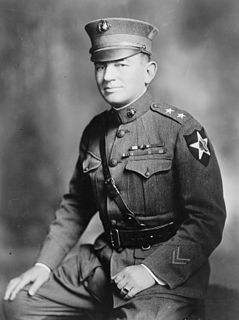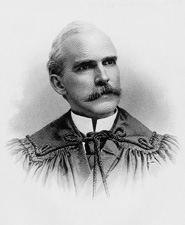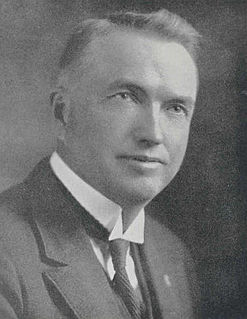
Spartanburg County is a county located on the northwestern border of the U.S. state of South Carolina. The estimated population in 2021 is 331,081, making it the fifth-most populous county in South Carolina. Its county seat is Spartanburg.

Greenville is the county seat of and the most populous city in Pitt County, North Carolina, United States; the principal city of the Greenville metropolitan area; and the 11th-most populous city in North Carolina. Greenville is the health, entertainment, and educational hub of North Carolina's Tidewater and Coastal Plain. The city's official population as of the 2019 United States census estimate was 93,400 residents while the Greenville Metropolitan Area includes 117,798 people, making Greenville one of the densest municipalities in the state. In January 2008 and January 2010, Greenville was named one of the nation's "100 Best Communities for Young People" by the America's Promise Alliance. In June 2012, Greenville was ranked in the top ten of the nation's "Best Small Places For Business And Careers" by Forbes magazine. In 2010, Greenville was ranked twenty-fourth in mid-city business growth and development by Forbes Magazine.

Anderson is a city in and the county seat of Anderson County, South Carolina, United States. The population was 26,686 at the 2010 census, and the city was the center of an urbanized area of 75,702. It is one of the principal cities in the Greenville-Anderson-Mauldin metropolitan statistical area, which had a population of 824,112 at the 2010 census. It is further included in the larger Greenville-Spartanburg-Anderson, South Carolina combined statistical area, with a total population of 1,266,995, at the 2010 census. It is just off Interstate 85 and is 120 miles (190 km) from Atlanta and 140 miles (230 km) from Charlotte. Anderson is the smallest of the three primary cities that make up the Upstate region, and is nicknamed the "Electric City" and the "Friendliest City in South Carolina". Anderson is the home of Anderson University, a selective private comprehensive university of roughly 3,900 undergraduate and graduate students.

Greenville is a city in and the seat of Greenville County, South Carolina, United States. With an estimated population of 70,635 as of 2019, it is the sixth-largest city in the state. Greenville is located approximately halfway between Atlanta, Georgia, and Charlotte, North Carolina, along Interstate 85, and its metropolitan area also includes Interstates 185 and 385. Greenville was the fourth fastest-growing city in the United States between 2015 and 2016, according to the U.S. Census Bureau.

Spartanburg is a city in and the seat of Spartanburg County, South Carolina, United States, and the 12th-largest city by population in the state. The city of Spartanburg has a municipal population of 37,013, and Spartanburg County has an urban population of 180,786 as of the 2010 census. For a time, the Office of Management and Budget grouped Spartanburg and Union Counties together as the "Spartanburg Metropolitan Statistical Area", but as of 2018 the OMB defines only Spartanburg County as the Spartanburg MSA.

Greer is a city in Greenville and Spartanburg counties in the U.S. state of South Carolina. The population was 25,515 as of the 2010 census and had risen to an estimated 33,373 as of 2019. The city of Greer is located in Greenville County. It is part of the Greenville–Anderson–Mauldin Metropolitan Statistical Area. The city is additionally part of the Greenville-Spartanburg-Anderson, SC Combined Statistical Area in Upstate South Carolina.

John Archer Lejeune was a United States Marine Corps lieutenant general and the 13th Commandant of the Marine Corps. Lejeune had nearly 40 years service in the Marine Corps including commanding the U.S. Army's 2nd Division during World War I. After his retirement from the Corps he was the superintendent of the Virginia Military Institute.

Anderson University is a private university in Anderson, South Carolina. It offers bachelor's, master's, and doctoral degrees in approximately 78 areas of study. Anderson is affiliated with the South Carolina Baptist Convention and is accredited by the Commission on Colleges of the Southern Association of Colleges and Schools. Anderson participates in NCAA Division II athletics and is a member of the South Atlantic Conference.

Field Marshal William Gustavus Nicholson, 1st Baron Nicholson, was a British Army officer who served in the Second Anglo-Afghan War, the Mahdist War, the Third Anglo-Burmese War, the Second Boer War and the First World War. He became Chief of the Imperial General Staff and was closely involved in the reorganisation of the British Army in the early years of the 20th century.

Staff College, Camberley, Surrey, was a staff college for the British Army and the presidency armies of British India. It had its origins in the Royal Military College, High Wycombe founded in 1799, which in 1802 became the Senior Department of the new Royal Military College. In 1858 the name of the Senior Department was changed to "Staff College", and in 1870 this was separated from the Royal Military College. Apart from periods of closure during major wars, the Staff College continued to operate until 1997, when it was merged into the new Joint Services Command and Staff College. The equivalent in the Royal Navy was the Royal Naval Staff College, Greenwich and the equivalent in the Royal Air Force was the RAF Staff College, Bracknell.
The University of Nashville was an educational institution that existed as a distinct entity from 1826 until 1909. During its history, it operated at various times a medical school, a four-year military college, a literary arts college, and a boys preparatory school. Educational institutions in operation today that can trace their roots to the University of Nashville include Montgomery Bell Academy, an all-male preparatory school; the Vanderbilt University Medical School; Peabody College at Vanderbilt University; and the University School of Nashville, a co-educational preparatory school.

Joseph Haynsworth Earle was a United States Senator from South Carolina.

Scholars have identified more than 1,500 African American officeholders who served during the Reconstruction Era (1865–1877) after passage of the Reconstruction Acts in 1867 and 1868 as well as in the years after Reconstruction before white supremacy, disenfranchisement, and the Democratic Party fully reasserted control in Southern states. Historian Canter Brown, Jr. noted that in some states, such as Florida, the highest number of African Americans were elected or appointed to offices after 1877 and the end of Reconstruction. The following is a partial list some of the most notable of the officeholders pre–1900.

Edwin Anderson Alderman served as the President of three universities. The University of Virginia's Alderman Library is named after him, as is Edwin A. Alderman Elementary School in Wilmington and Alderman dorm at the University of North Carolina at Chapel Hill. Alderman was the key leader in higher education in Virginia during the Progressive Era as president of the University of Virginia, 1904-31. His goal was the transformation of the Southern university into a force for state service and intellectual leadership and educational utility. Alderman successfully professionalized and modernized Virginia's system of higher education. He promoted international standards of scholarship and a statewide network of extension services. Joined by other college presidents, he promoted the Virginia Education Commission, created in 1910. Alderman's crusade encountered some resistance from traditionalists and never challenged the Jim Crow system of segregated schooling.

John Jackson McSwain was a U.S. Representative from South Carolina.

The Wahrenberger House is located two blocks from the Texas Capitol, at 208 W. 14th Street, in Austin, Travis County, in the U.S. state of Texas. The home was built between 1867–68 by Friedrich Huster and sold to Charles Klein after completion. The house is named for Klein's daughter Caroline Wahrenberger, who was deeded the house in 1882. Since it was built, the house has served as a residence for several generations of the Klein–Wahrenberger family, and was the location for two German–American schools. At different times, both Pat Morris Neff and Sam Rayburn lived in the residence when Mrs. Wahrenberger ran it as a boarding house. It was added to the National Register of Historic Places listings in Travis County, Texas in 1978, and was designated a Recorded Texas Historic Landmark in 1972.

Carlisle Military School was established in 1892 at Bamberg, South Carolina, as The Carlisle Fitting School of Wofford College and closed in 1977. This school was named in honor of Dr. James H. Carlisle, who was the president of Wofford College in Spartanburg, South Carolina (1875–1902) and one of the most preeminent educators in the history of South Carolina. Dr. Carlisle stated that "The student ought to be educated not simply or chiefly because he intends to become a farmer, lawyer, or statesman, but because he is a human being - with inlets of joy, with possibilities of effort and action that no trade or calling can satisfy or exhaust".
The following is a timeline of the history of the city of Augusta, Georgia, USA.
Mihailo Rašić was a Serbian and Royal Yugoslav Army general and Minister of War of the Kingdom of Serbia in World War I. After the end of the war in the Kingdom of Yugoslavia, he continued his service as Minister of the Army and Navy in the Ministry of Defence. He served as the 16th dean of the Academic Board of the Military Academy in Belgrade (1912-1914).
















